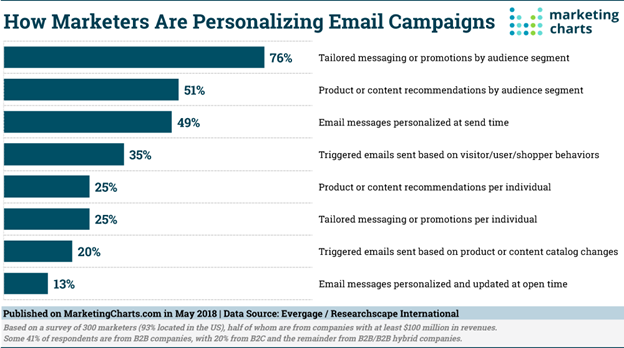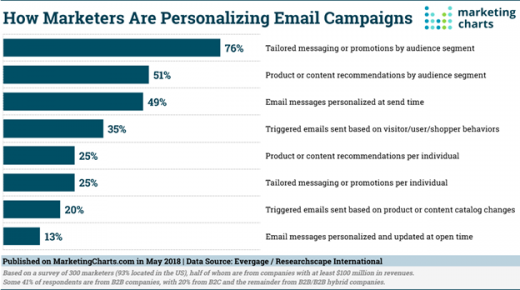How Apple’s IOS 15 Update Affects Your Email Marketing
With its recent IOS 15 update, Apple released a series of privacy updates designed to protect consumer privacy by blocking ad trackers and cloaking email activity. While Apple has long been an advocate of consumer data privacy, this latest update is causing a stir among marketers and agencies who rely on these first-party data insights to reach Apple consumers.
Let’s dive into what these privacy updates mean for your email marketing and how you should respond.
Apple IOS 15 Privacy Updates
In this latest update by Apple, consumers are gaining more control over the data they share through Mail Privacy Protection, Hide My Email and Private Relay.
Mail Privacy Protection:
This feature prevents senders from using invisible pixels to collect information about the user. Marketers have historically used these pixels to monitor information such as what other apps a consumer uses, how long they spend reading through email, and IP address.
Apple describes the feature like this:
“When you receive an email in the Mail app, rather than downloading remote content when you open an email, Mail Privacy Protection downloads remote content in the background by default – regardless of how you do or don’t engage with the email. Apple does not learn any information about the content.”
The feature also prevents marketers from seeing a consumer’s IP address when they open an email. Instead, the consumer’s IP address is routed through multiple proxy servers and another IP address is assigned to the user.
The Mail Privacy Protection feature effectively makes tracking pixels useless, protecting a consumer’s privacy.
Hide My Email (iCloud Plus subscription service):
This feature allows Apple email users to create unique and random email addresses to use on apps, websites, social media and more.
A user may use this feature when signing up for a newsletter, making a purchase on an ecommerce site, emailing someone they don’t know or for numerous other applications when they want to protect their privacy. These emails are forwarded to the user’s mailbox and at any point, the user can change the email address that receives forwarded messages or turn off email forwarding to stop receiving messages.
iCloud Private Relay (iCloud Plus subscription service):
This feature is designed to protect a consumer’s identity when browsing in Apple’s browser, Safari. When a consumer has this feature enabled, traffic is run through two Apple servers, allowing Apple to mask a user’s identity, web history and IP address.
This feature reduces the amount of data that websites and browsers collect about users since these third-party servers can no longer track users across the web — which is known as fingerprinting. The majority of advertisements consumers see on websites and apps are based on data collected by this fingerprinting process.
How These Changes Affect Your Email Marketing and What You Can Do Instead
1) Redefine Your Metrics
The biggest change is that marketers will no longer be able to rely on the open rate as a reliable metric. As a result, marketers won’t be able to A/B test email subject lines or determine who their most active subscribers are. Work to create new metrics, such as conversions or revenue generated per campaign.
2) Rethink Segmentation
Marketers have often used geolocation targeting or segmented emails based on who opened previous ones. These metrics will no longer be reliable. However, this is a prime opportunity to segment your list based on user engagement metrics such Signups for events, purchase orders, items added to shopping cart or customer lifetime value.
Campaigns using messaging personalized messaging often perform better than those that don’t. Studies have shown emails with personalized subject lines are 26% more likely to be opened than those without, and revenue is 5.7 times higher in emails that employ personalization. (Campaign Monitor)
In research study by Evergage, marketers are using personalization in the following ways:
- 76% – Tailored messaging or promotions by audience segment
- 51% – Product or content recommendations by audience segment
- 49% – Email messages personalized at spend time

Use Data to Focus on Personalization
To further personalize your outreach, use third-party enhancement to understand your users including demographics, lifestyle data, and behavioral insights.
V12 offers a broad consumer data catalog to add context and depth to the understanding of each consumer, and our consumer, phone and email databases provide a scaled footprint for identity resolution. We also offer the industry’s largest and most inclusive suite of in-market B2C shopper databases so brands can send targeted communications to consumers actively in-market for the products and services they sell.
Focus on First-Party Data Collection
A consumer’s first-party data that they willingly provide will become increasingly important in a privacy-sensitive environment. In fact, consumers are often willing to provide this directly to brands for more personalized messaging. Be up front about what you are using their data for (i.e. personalized recommendations based on their geographic location) and provide enticements to provide this data such as collecting this data such as sweepstakes, coupons, discounts, or loyalty club membership.
In a survey of more than 7,000 consumers, Salesforce found that 57% of consumers are willing to share personal data in exchange for personalized offers or discounts. Similarly, 52% of consumers would share personal data in exchange for product recommendations, and 53% would do the same for personalized shopping experiences.
Email continues to be one of the most cost-effective and dynamic ways to engage with your subscribers. Although the email landscape may change and marketers may need to adapt, the effectiveness of this high-performing channel is not changing anytime soon.
Digital & Social Articles on Business 2 Community
(24)


